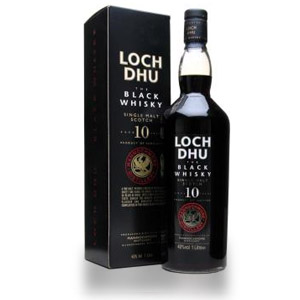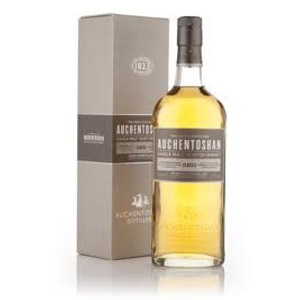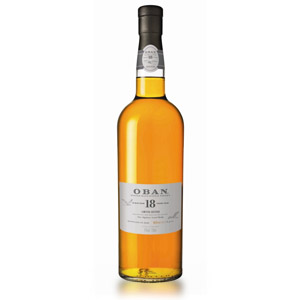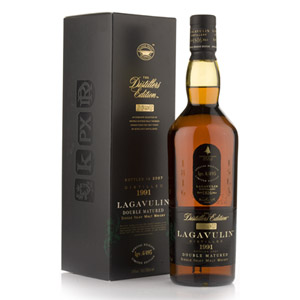Winning fans and awards the world over, the popularity of Japanese whisky has become a 21st century phenomenon…
Japan was introduced to scotch whisky in the late 19th century, when sailors and traders shipped the spirit into coastal port towns – but it wasn’t until decades later that commercial production of whisky really took off. Two men are credited with kickstarting Japan’s love affair with whisky: Shinjiro Torii and Masataka Taketsuru established the historic Yamazaki distillery together in 1924, producing whisky in the traditional western scotch style, distributing it across the country, and inspiring others to do the same.
Since those humble beginnings in the first half of the 20th century, Japanese whisky production has transformed from a handful of domestic distilleries, into a thriving international industry. Today, Japanese whisky rivals western scotch for the attention of whisky lovers: if you’re yet to experience a Japanese dram for yourself, it’s time to learn why the spirit has become one of the most exciting features of the global whisky landscape…
Distillation Environment
Japan itself plays a part in the character of the whisky it produces – not least thanks to its mountainous topography. Japanese whisky is distilled at high-altitude – around 700 to 800 metres above sea level – which makes it easier to remove unwanted toxins from the spirit, and subsequently achieve a greater range of aromas and smoother texture. Japan’s natural environment is important in more ways than one: the purity of the mountain water used in the distillation process contributes to a characteristic lightness and sweetness that distinguishes the spirit on the international landscape.
Mizunara and Bamboo
Japan’s distillers may choose to age their whisky in Mizunara oak – an indigenous wood not normally available to western producers. Mizunara oak is porous so it has to be used in conjunction with other types of wood during maturation, but is also known for its high levels of aroma and flavour-stimulating lactones, which produce profiles including notes of citrus fruit, coconut and sandalwood. Bamboo is also a feature of the Japanese distillation process: in addition to the traditional charcoal filtration method, bamboo filtration mellows the spirit significantly, and reinforces that aforementioned smoothness of texture.
Mastering the Blend
In comparison to Scotland, Japan is home to a smaller number of distilleries – and nor does Japan share its spiritual ancestor’s culture of inter-distillery trade of barrels and malts. This relative lack of commercial diversity has led Japanese producers to value the blend as much as the single malt – as master-distillers use their own malt stock to innovate and experiment across the flavour spectrum. Consequently, Japan produces higher number of impressive blended whiskies – many of which win international recognition.
Versatility
Given its typical lightness and sweetness, Japanese whisky is a more flexible and versatile drink than most varieties of western scotch. This attribute makes Japanese whisky suitable for a range of drinking experiences, including food pairings – in fact, it’s typical to see the spirit served at lunch and dinner in Japan since it works especially well with the distinctive umami flavours of Asian cuisine. Cocktails are also an attractive option for adventurous Japanese whisky fans: the spirits can be used to put a fresh spin on classics, or provide possibilities for fresh concoctions.
Prestige
Japanese whisky has no shortage of fans, but its global prestige has been consistently reinforced by remarkable performances in internationally-recognised whisky competitions. In 2014, the Jim Murray Whisky Bible named the Yamazaki Single Malt Sherry Cask the best whisky in the world – a ‘bottle-shock’ moment which announced Japanese whisky on the international landscape. In 2018, Japan’s whiskies are as competitive as ever: at the 2018 World Whisky awards the Hakushu 25 Year Old won Best Single Malt, the Taketsuru 17 Year Old won Best Blended Malt, and the Ichiro’s Malt & Grain Limited Edition won Best Blended Limited.
Drinking Culture
While a typical western scotch ‘experience’ might be a dram savoured after dinner, perhaps by a roaring log fire, Japanese whiskies lend themselves to a range of situations, from a quiet, relaxing drink in solitude – to nights out, and dinner parties with friends and family. In Japan, the most popular way of enjoying whisky is the ‘highball’: whisky served with soda water, on ice, in a style perfect for the casual atmosphere of bars and restaurant. The highball style is popular in most Japanese drinking establishments but it is enjoyed so widely that it can even be found in vending machines in airports and hotels.
 Disclosure of Material Connection: This is a “sponsored post.” The company who sponsored it compensated me via a cash payment, gift, or something else of value to host it. Regardless, I only recommend products or services I use personally and believe will be good for my readers. I am disclosing this in accordance with the Federal Trade Commission’s 16 CFR, Part 255: “Guides Concerning the Use of Endorsements and Testimonials in Advertising.”
Disclosure of Material Connection: This is a “sponsored post.” The company who sponsored it compensated me via a cash payment, gift, or something else of value to host it. Regardless, I only recommend products or services I use personally and believe will be good for my readers. I am disclosing this in accordance with the Federal Trade Commission’s 16 CFR, Part 255: “Guides Concerning the Use of Endorsements and Testimonials in Advertising.”






Hello Scotchnoob,
I read your blog regularly and have never seen you post content like this. Have you decided to give sponsored posts a try? Will this be a regular occurrence? Am I wrong to be upset?
-Lindsay
Hi Lindsay, I used to host “Guest Posts” on the blog, which are basically sponsored posts without the sponsor payment (always disclosed with a “Guest Post” label in the title). I decided to begin charging for them, but with appropriate disclosures, no more than once a month, and not replacing a regular Monday post. If you’re upset, that’s understandable. Gotta buy that whisky to review… Cheers!
Hi Mr. Scotch Noob,
I’m curious to know (if you’d be willing to share) why you run this site. I don’t think you necessarily need to have journalistic integrity, especially because you’re just a blogger. What I’m just curious about is your motivation for the sponsored post was – especially since, in my opinion, it was a pretty lame post. I want to be able to trust that your reviews are based on your opinion and not a corporate selling point. It’s a catch 22 – maybe I do want journalist integrity, but I also understand the desire for beer (whiskey) money. I just want to know if this is a blog for money or for fun and I think that a lot of your readers would like to know that too. Please provide us the tools to evaluate the validity of your opinion.
Hi Lindsay, fair question. The blog was started for fun and I continue to run it for fun. That said, I need the site to return revenue in order to: 1) pay for whisky to review, which is where 90% of it goes, and 2) justify the time I spend on it. I have a “real” job, and side projects as well that would be a more lucrative way to spend this time. By making a small income from the site, I justify this time expenditure. The revenue also keeps me motivated – it’s very easy on a Sunday evening to think “eh, I can skip a review THIS week…” and the next, and the next. The motivation to keep the revenue stream up goes a long way to prevent that from happening. I can’t tell anyone that they should “believe” that my motivations are pure, but at least I don’t think anyone can fault the transparency on the site. Every review includes the source of the whisky (most of them are Master of Malt samples that I paid for with ad revenue), and the few posts that directly paid me are marked as Sponsored. I personally think of these the same way I would think of a full-page ad in a magazine: just another ad. The samples that I receive for free are marked as such, and the reader is free to dismiss my opinion if that’s concerning for them. My Sample Policy (right sidebar) does clearly state that I don’t guarantee positive reviews in exchange for samples, which is also what I tell PR firms that offer me samples. I often turn down samples that are for whiskies over $150 retail, because I cannot in conscience recommend them at those prices. I even once told a PR firm that if they sent me a sample of Hibiki Harmony I was very likely to review it negatively. They opted not to send me one. Still, for all that, I could be lying through my teeth and all you’d have to go on is my word. This is the Internet after all, for all its warts. Hope that helps. Cheers!
What makes Japanese whisky so popular? Apparently compensated ad spots don’t hurt but, when the good press is paid for, it makes me wonder just how popular this stuff is, or should be. The notice about sponsored content is fair, but it raises a question which is also fair: how much of the positive sound from bloggers in general is actually “sponsored” but undeclared?. For all the integrity that we’re supposed to take as a given, how many bloggers have the real ultimate aspiration of doing a lot of drinking on the cuff like Dave Broom or Charlie MacLean?
On that note, the point about paying the whisky bills is well made, but a lot of professional whisky writers use the same reasoning to pay all of their bills. For all of the whisky prose that it’s given us, I don’t think that the commentary-for-pay model has enhanced whisky criticism, or whisky, very much, just expanded marketing departments under another guise. On the upside, however, there’s obviously a method to the madness: although it wouldn’t make the whisky any better, Japanese whisky would be much more popular in general if it offered compensation to the average consumer.
As is the case nearly every time we have a complaint about something in the whisky world, The Whisky Sponge already nailed it:
https://whiskysponge.com/2014/11/06/whisky-bloggers-to-be-renamed-bribe-units/
I must be doing it wrong. I’ve never been offered a trip! Or swag. I sometimes get 50ml samples but I have to ask for them, and it’s usually not worth the bother to save myself the $5 for a Master of Malt sample. Somebody point me in the direction of whisky companies willing to throw money at me, kthx. On the other hand, I have no journalistic integrity. I’m a freaking blogger. Maybe that’s the problem. I now declare myself a Professional! Where’s my free stuff?
I have no problem with sponsored content, provided it doesn’t appear too often and is clearly labeled as such. This is a great site, and someone, somewhere, has to ensure it’s financial survival. If there’s one maxim that scotch whisky lovers should understand, it’s that quality costs money.
That said, the problem with sponsored content is that it is often misleading. This post, for example, conveniently omitted the fact that “Japanese whisky” does not actually have to be made in Japan in order to be so labeled.
https://thewhiskeywash.com/whiskey-styles/world/japanese-whisky-made-japan-right/
More info on that topic: https://scotchwhisky.com/magazine/features/19680/not-all-japanese-whisky-is-japanese-whisky/
I understand your POV, but it’s a little ironic that sponsored content is justified with the idea that quality costs money but that, at the same time, sponsored content is often misleading. If the second part is true, is the net effect of sponsorship to improve or detract from the quality it pays for?
It is not ironic. It is a business transaction. We are customers of this site in the sense that we enjoy the benefits of using it, but we will have to “pay” for the privilege by tolerating lower quality content that provides the owner with renumeration that he does not get from us.
Once high quality content is rewarded with remuneration, the result is lower quality content, which I do find ironic (writers are essentially paid to write worse, not better) – although that’s within the model of saying things which either back up, or at least don’t contradict, the industry’s messaging (but that’s also where most of the remuneration is). Ralfy probably makes pretty good whisky money from a channel that doesn’t toe industry lines, but the pros know which side their bread’s buttered on and, as Dom Roskrow once said, what professional whisky writers do isn’t journalism, it’s marketing.
For bloggers wondering what they’re doing wrong, here’s an interesting perspective: https://www.whiskyandwisdom.com/?p=897#more-897
Here, problem bloggers seem to be those who just aren’t grateful enough or who aren’t advancing “the greater cause” – which I gather is promoting, rather than critiquing, whisky – in the “right way” to the point that apparently “many folks” in the industry view bloggers with disdain while essentially only marketers like them. If this means that there should, logically, be “conflict” within the industry between its marketers and other mystery factions, I guess the latter “many” clearly lost the war some time ago. To read this thing, you’d think that the chief failure of blogging is in not providing the honest press that the industry itself has tried so hard to discourage by subverting it with insider events and giveaways in the first place. Buying you off costs a lot of money, bloggers, so what can producers expect for their investment, you parasitic seagulls? You’re there to help “promote the product and the brand”, so know your role, jabroni – if you’re at the event, you’re on the payroll. Above all, be professional like Dom Roskrow or Dave Broom, even though being a professional whisky writer is, again, an exercise in marketing, not journalism.
And what has the overall result of the commentary-for-pay model been? Basically more marketing and a whisky “press” that consumers can neither trust nor directly challenge. Whisky Advocate has given up all pretense of being a forum for discussion and scotchwhisky.com and Whisky Magazine don’t invite commentary either. Just as the SWA was set up to influence the shape of scotch regulation, the current whisky press is maintained by industry sponsorship to influence the shape and parameters of mainstream whisky thought and debate under the guise of independent perspective and expertise.
This isn’t a problem unique to whisky journalism. Online media long ago taught it’s users that content is free, and so here we are two decades into the internet age with no one having developed a sustainable business model for online journalism. We don’t know exactly what the end result of this will look like, but you can be sure it will be expensive compared with the status quo.
I agree, the problem isn’t unique to whisky journalism. The central issue, however, is who won’t pay for the content (readers) and who will (the industry). Readers won’t pay for the content because:
– Many readers are cheap/insufficiently invested in the topic.
– There isn’t enough content or it isn’t of high enough quality to pay for on any regular basis (and this can be related to the point above). I think Serge writes as well, and as honestly, about whisky as anyone on the Web, but I wouldn’t subscribe to his website to read it – most of what he writes is just reviews and most of the products reviewed are things that I’ll never see, much less afford to buy. Thus, yes, I am too cheap/insufficiently invested in the topic he writes about to pay for his thoughts on that topic, and there hasn’t been a new comic strip on that site for a long time, even though those comic strips, in two to four panels, usually told more truth about whisky than much of the rest of the web combined.
I think that Ralfy tells as much truth about whisky as anyone – and a damn sight more than most – and I’m glad that he sees some revenue from his viewership on YouTube, given that many other whisky channels which have content less objective and/or knowledgeable are also making a buck. But while YouTube’s a true marketplace of ideas, it’s also the Wild West of reason; there, you can make money telling people that the world’s flat… or that age doesn’t matter to whisky… and many do.
Some websites manage to sell professional ad space, but not in the volume that anyone can become a full-time whisky blogger/journalist while living off of their ad revenue, and even the biggest of the pros have to have a stable of books, classes, events, promos and other stuff to help make ends meet. The industry is willing to pay, not really for content, but for heavy influence over content because, yes, bloggers and whisky writers can influence opinion. So far, payment for influence seems to take the form of free samples, invitations to events and access to industry sources and this, in combination with ad revenue influence, has proved enough to turn most of the professional whisky press into little more than an “independent and objective” extension of industry marketing teams. This is valuable to the industry because, while Nick Morgan is clearly on the Diageo payroll, if Dave Broom says the same things, well, he’s an independent expert, right? The angle of “the experts agree” can have a strong influence, particularly if you don’t look at what influences the experts.
So at least part of what we’re left with is reflected in the old adage “he who pays the piper calls the tune”; readers won’t pay for a whisky press that reflects their interests while the industry clearly will. Although the lack of a sustainable online business model hasn’t helped, the central problem with whisky journalism is that much of it stinks to high heaven, plainly corrupted by the influence of the industry that it’s supposed to cover. Real journalists have found selling content online to be a challenge in general, but one of the problems with whisky journalism is more fundamental than that: whisky has few journalists, just writers looking to become more influential so they can get cozier with producers.
Or, at least when I tell myself the above, it makes me feel better about being too cheap to pay for it.
A whiskey this scarce and expensive is irrelevant to all but speculators. Add the tasting idiosyncrasies of a well-known whiskey reviewer and voila, reason and taste buds are clouded by the next tulip bubble. Your mind will force you to like it to avoid being labelled with an uninformed palate or to suffer such steep financial regret. Even if gifted a sip, you will look the ungrateful whelp if you do not heap it with highest praise. Interesting sociological phenomena, and I wish I owned the brand, but truly irrelevant to the wider world of fine whiskey aficionados.